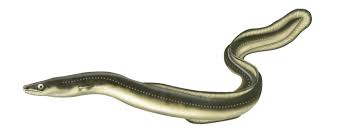TUNA REPORT
Opening statement.
The Eel’s scientific name is Anguilliformes but in maori it is called a Tuna. There are two main types of eels one is longfin and shortfin. Eels are known to be freshwater wish and the loses of eels is coz by wetlands.
Appearance
When eels a little babys they are only a millimetre in length and as they grow up the eels can grow up to two metres long.Eels have smooth heads but when eels grow up their heads become bulbous (fat and round or bulging). Eels have scales and fins. The longfin eels have colored eyes that can be dark brown or grey black eye color. As eels grow up their head become more slender and tapered almost bullet like.
Breeding
When longfin eels are ready to breed the longfin leave New Zealand and then they swim all the way to the subtropical pacific ocean to breed. Once the longfin eels breed that's the only time they can then die. The female longfin eel lay millions of eggs and then die but the baby eels swim in the sea and then they find its way back home.
Diet
The longfin eels can feed on insects,larvae,worms and water snails but as they grow up and get bigger they start feeding on bigger fish,freshwater crayfish,even small birds and ducklings.
Habitat
Longfin eels can be found all thought New Zealand and in lakes,creeks,rivers and islands from the cost and you can find baby eels that have come from the pacific ocean try to swim up streams or up water falls.
Closing statement
Longfin eels can live up to 25 to 80 years old until they breed then die but the shortfin eels live up to 15 to 18 years and people should not eat longfin eels because they are toxic inside of them.There are a big loss of longfin eels because it is from the big loss of wetlands.